After visiting the art scene of Berlin with my mum, we decided to take a tour to discover Berlin’s most iconic place, still present even though it’s gone. So, we went walking the Berlin wall.
The Wall and Me
When I was little, there were two Germanys. And there were two Berlins. I remember looking at maps, fascinated yet intimidated by that line, running across that country that I knew was in fact one. West Germany was green, and East Germany was always red – and that tiny dollop that was West Berlin stood out, right in the centre of that red expanse.

My grandfather used to say that dividing Germany was a great idea. The country was too big, too powerful – and he had seen first-hand the consequences of such power, during World War II. I didn’t understand, as a child – didn’t understand the tales of terror, of violence and fear that he told me, thinking that somehow I was ready for them, or that even though I was a child, I needed to know.
Then, when I had just started elementary school, the Wall fell. I have vague memories of that day – the ‘breaking news’ TV broadcast, the feeling that things were about to change. And change they did – the Nineties happened, Germany and Berlin went back to being one.

November 2014 marked twenty-five years from that day that changed history. The Wall is gone – but somehow it’s still there, present in its absence, absent in its presence. The presence/absence of the Wall, and how it shaped not only this city, but Europe as a whole, is something that cannot be understood, unless one knows history.
Walking the Berlin Wall with Context Travel
Up until our Berlin visit in March 2014, we only knew history through iconic images. The Soviet soldier waving the hammer and sickle flag after the city was liberated in 1945. Conrad Schumann leaping over barbed wire in 1961. Aerial shots of the Eastern and Western Wall, no man’s land within. And the photos of November 1989.
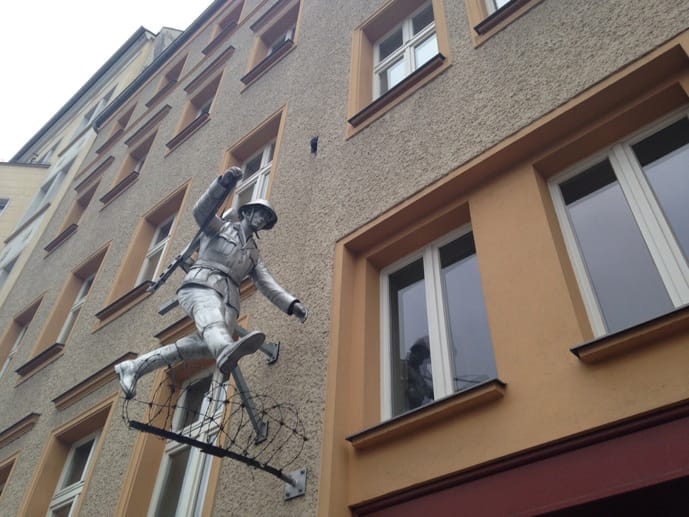
Then, we had the chance to join the Walking the Wall tour organised by Context Travel. These are not your run of the mill walking tours, run by guides that simply studied a script. Context Travel only hires PhD level academics who specialise in what the walk is about. Our guide, a Danish man called Rasmus, was a German culture scholar whose area of interest was depictions of metropolises in literature.
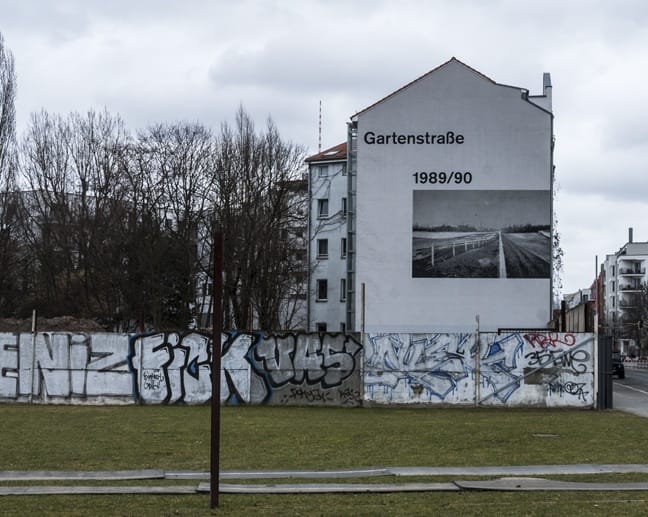
The tour began at the Berlin Wall memorial visitor centre, in Bernauer Strasse. Having come from the Bernauer Strasse U-Bahn, we walked along the entire memorial, a 1.3 km strip of grass, empty and sombre, surrounded by wall paintings of iconic moments related to the Berlin wall – including Conrad Schumann.
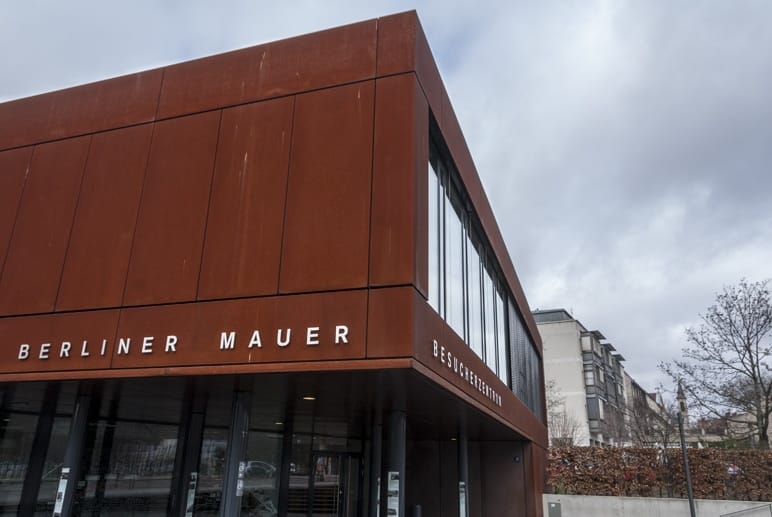
The memorial was imposing in its emptiness, a nothingness that was perhaps there to counterbalance the feelings, hopes and dreams that had crossed the space for much of last century.
Rasmus agreed that knowing 20th century history is essential to understand the Wall and Berlin as a whole. So, he gave us an overview of what happened – during the War, and afterwards. He transported me straight back to my high-school classroom, when we learnt about Berlin.
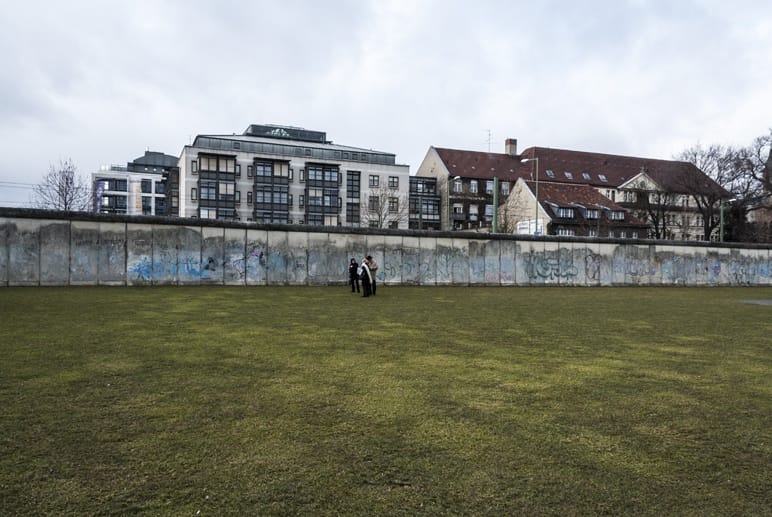
The History of the Berlin Wall
I remember being at school, tired and sweaty in a hot June morning in Italy. No one was paying attention, except for me and a couple other history nerds. I remember listening about the Berlin Blockade, when the Soviets cut off all land borders to West Berlin, and all supplies had to be airlifted. I loved hearing about the Raisin Bombers, Allied planes that used to parachute sweets (and presumably raisins) during the blockade, as they flew over East Berlin. After years in which planes were bearers of sorrow and death, they finally brought some sort of joy to the children of East Berlin.
Rasmus proceeded to outline the reasons and political intrigue underlying the decision to build the Wall – or the ‘antifascist blockade’, as it was called by the Soviet rulers of East Berlin.
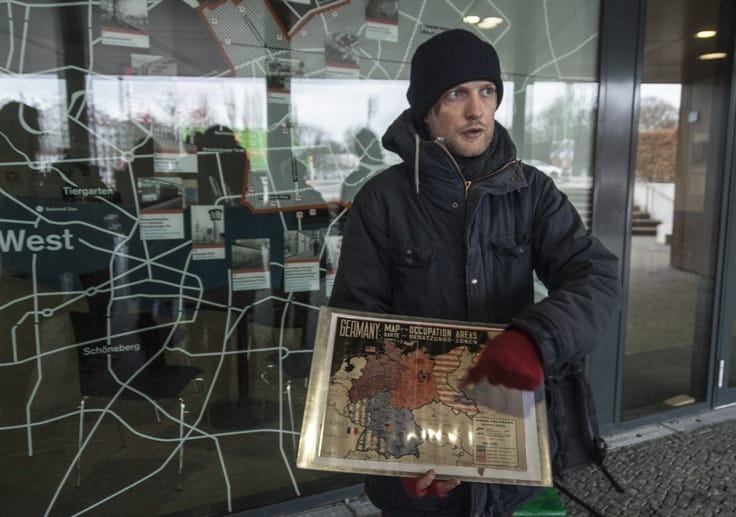
Showing us city maps from the Fifties, the Eighties and 2010, Rasmus showed us how the Wall shaped the city. It wasn’t built in a straight line – rather, it snaked and zig-zagged across town, following the river and other natural landmarks, then cutting across houses and neighbourhoods. Some houses were even evacuated as they became part of the Wall itself. Their windows were boarded first, then bricked up, but people still found a way to escape. Eventually, they were knocked down.
Walking the Berlin Wall memorial
Then, we crossed the street to the Memorial, and started walking the Berlin wall. Yes, because the Wall was still there. It was there in the rows of iron poles that marked where it used to stand. It was there in the bricks on the floor, running across where it used to be. It was there in the relics, in the spiked metal and ditches that were used to stop vehicles from driving across.

The Wall was there in only sections of the memorial left as it was – complete with watchtower (bought on eBay), and barren no man’s land within. It was blocked off on both sides, and people peeked in through the cracks between one concrete slab and another. That image stuck with me. East Berliners, looking towards West, towards what they perceived as freedom.
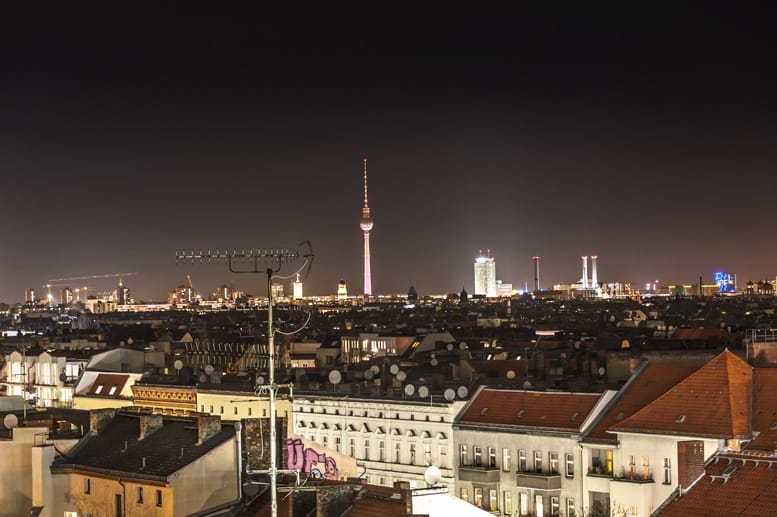
The Wall and West Berlin
And what about West Berlin? I remember reading Christiane F’s book The Children from Bahnhof Zoo when I was a teenager. West Berlin was far from being the glittering, uber-capitalist dream of big cars and wallets full of cash. The book portrayed it as a filthy, broke, derelict place.

The West German government pumped West Berlin full of cash, to keep it as its capitalist show city. Salaries in West Berlin were higher than the rest of the country, and consequently prices were higher too – but away from the shiny Ku’damm and the other showcase streets, life was hard. What really surprised me, was that the Wall is barely mentioned in the book, as if nothing existed in the other side of it, and life began and ended in West Berlin.
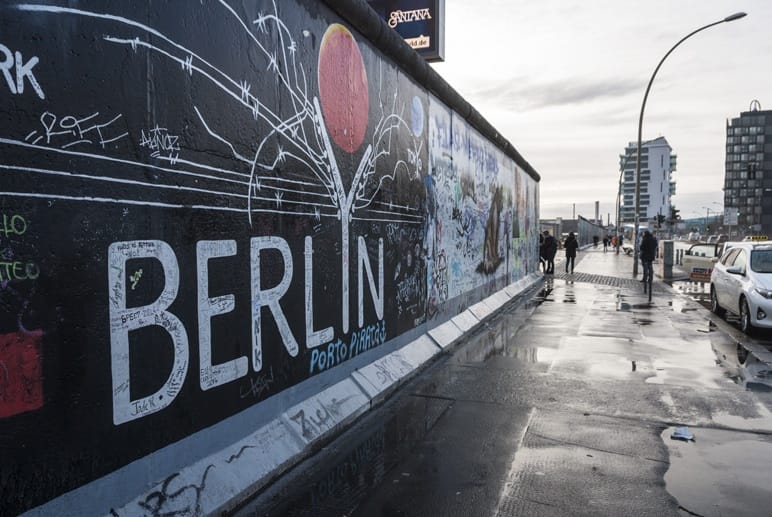
We asked Rasmus how life was, on the western side of the Wall. He told us that many West Berliners – especially those born when the Wall was already up – barely considered East Berlin. It just wasn’t on their radar. They acknowledged its existence, but didn’t particularly care to visit.
The Berlin Ghost Stations
Then, Rasmus showed us two S and U-Bahn maps, one from West and one from East Berlin. As the underground was built when the city was still one, the Wall meant that the train network had to be divided, too. Some lines ran solely within East or West Berlin, others turned back at the border, but three lines – the U6 and U8 on the U-Bahn and Nord-Sud Tunnel on the S-Bahn – ran mostly through West Berlin, but crossed East Berlin as well.
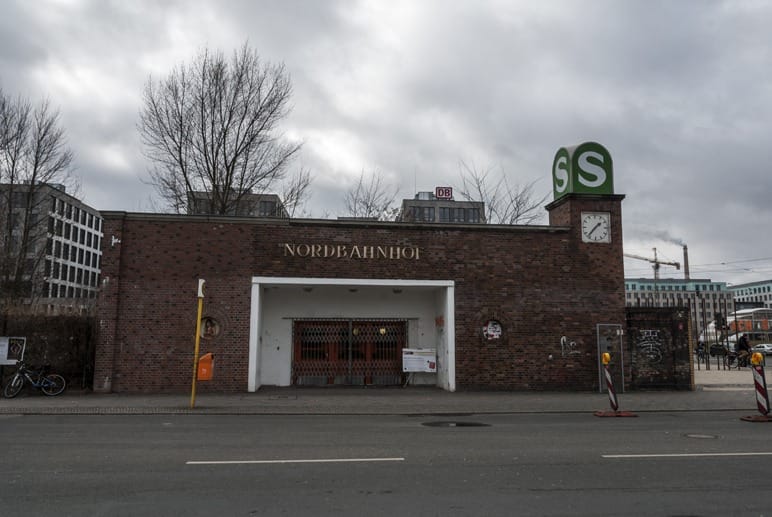
The West Berlin map showed the wall as a jagged grey crack, with greyed-out lines beyond. Those were the U6, U8 and Nord-Sud Tunnel, that became known as Geisterbahnhof, the ghost stations. These were dimly lit and heavily guarded, and trains accelerated as they passed through, to prevent Easterners from clinging onto the trains and escaping. But on the West Berlin train maps, East Berlin was there – albeit as a greyed-out version of reality.
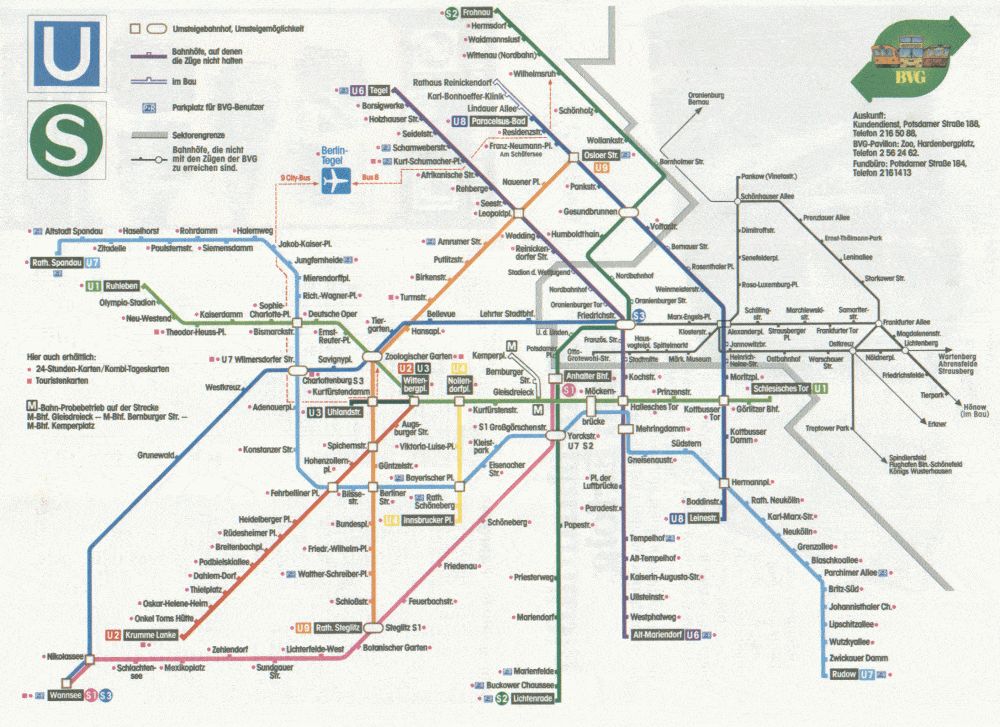
When looking at East Berlin maps, the Eastern side is named “Berlin, Hauptstadt der DDR” (Berlin, Capital of the GDR). In the west, there is a big, white expanse of nothingness, merely dubbed Westberlin. The GDR authorities attempted to block out reality, with the construction of the Wall. Only the East Berlin side existed. The other side was nothing.
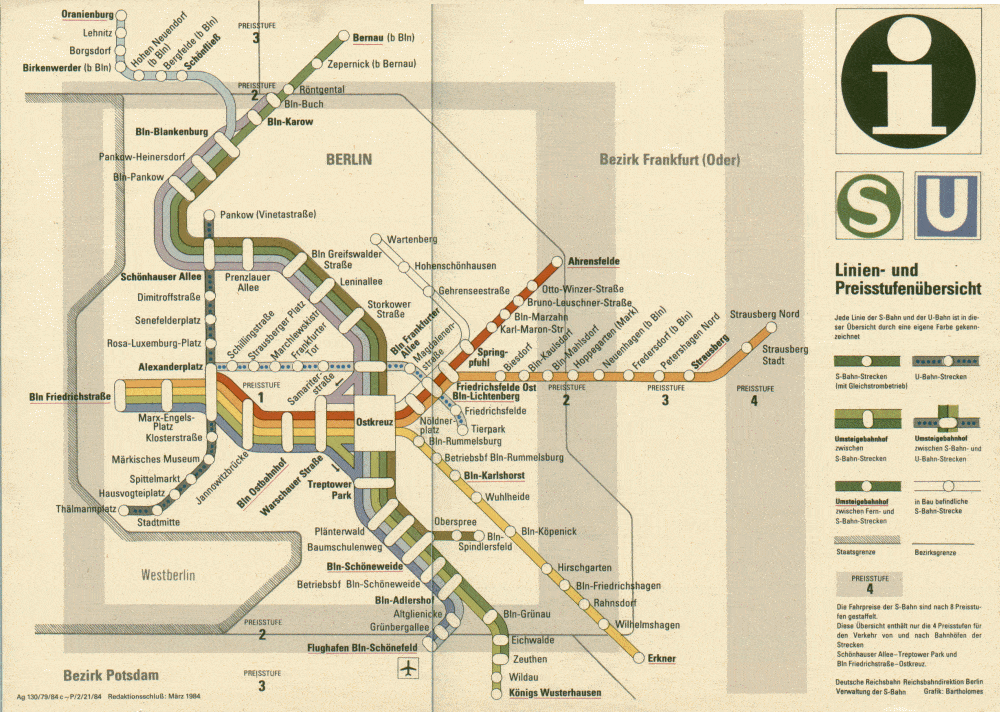
The victims of the Wall
One of the most moving locations we visited was the memorial to the 136 victims of the Berlin Wall. Some were shot while escaping, others died when their escape plans went wrong, like the very last victim, Winfried Freudenberg, who fell from a hot-air balloon. Four months later, the Wall fell.

The list of victims includes some children. Some were involved in escape attempts gone wrong – others, at least two or three, drowned in the Spree after accidentally crossing while playing. Rasmus told us that Eastern and Western border guards stood powerless, not knowing whether or not to act, afraid that they’d be shot down but those on the opposite side.
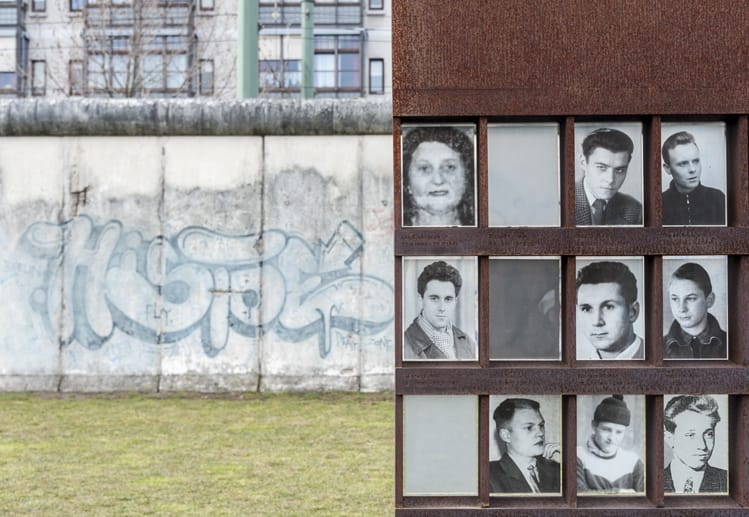
Walking the Berlin Wall memorial was an intense experience. You’ll find none of the tacky memorabilia of Checkpoint Charlie, and no giggling schoolkids taking selfies, like at the East Side Gallery. The memorial is sombre in its emptiness – you don’t need gruesome exhibits, as the influence that the Wall exerted over the city is still alive, even twenty-five years later.
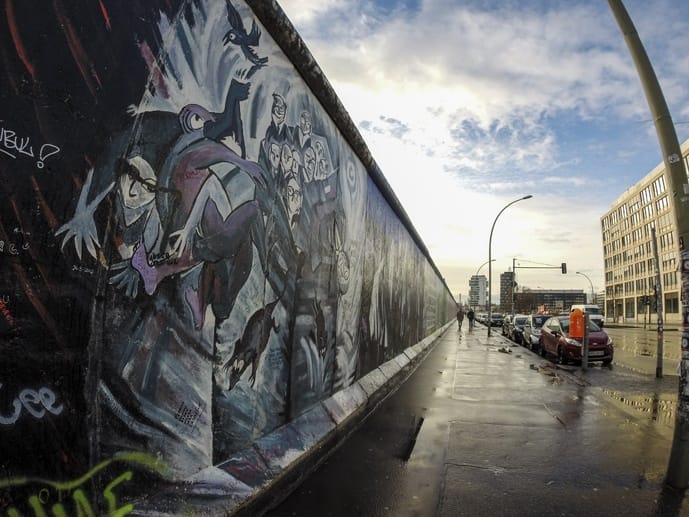
After our walk at the memorial, we took a tram with Rasmus, bound for the East Side Gallery where the tour ended. He told us of what happened in Berlin, after the wall fell. The two sides of the reunited city couldn’t be more different, but they had one thing in common: both were broke. The municipality didn’t have a dime – West because they had to keep the uber-capitalist dream alive, East because the Soviet world was shattered. Property prices were rock-bottom, derelict buildings were everywhere – plenty of cheap housing for the young, bohemian youth from the rest of Europe and beyond.
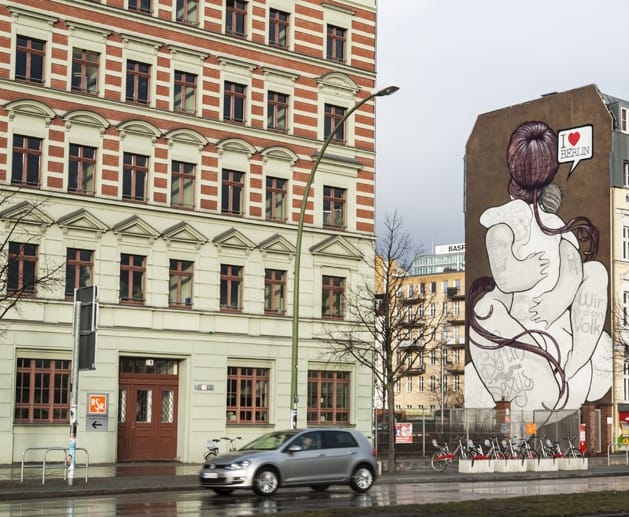
With the fall of the Wall, alternative Berlin was born. Artists, photographers, musicians and filmmakers moved in, turning the city into the creative spot it still is. A place where communities are still strong, and abandoned places are being redeveloped with communities in mind – as it was the case with the former Tempelhof Airport, now a public park.
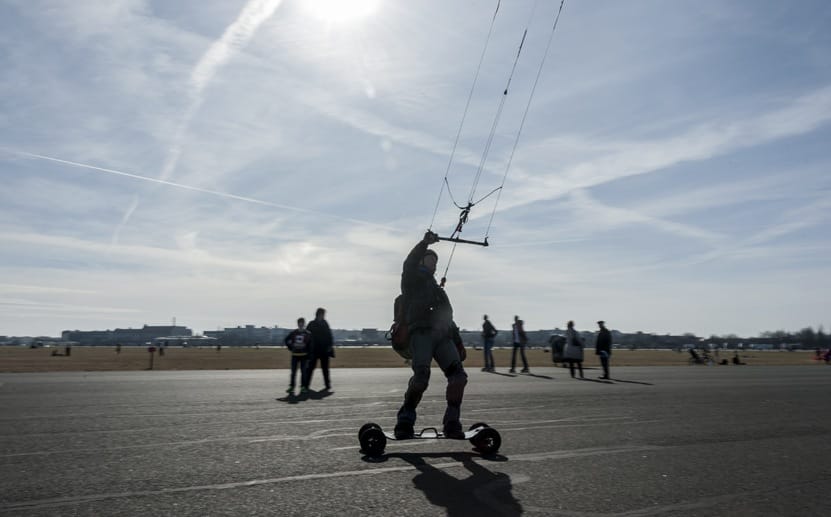
However, corporate dollars are threatening Berlin’s indie vibe. In my street art post, I have spoken about the controversial decision of street artist Blu to cover up two of his pieces. Rasmus told us of the popular Mauerpark flea market, that is now facing closure because the municipality (that is still broke) decided to call a tender to redevelop the area.
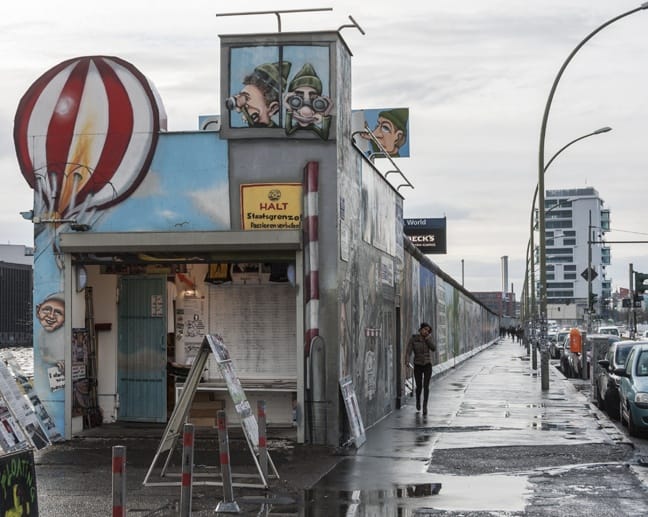
Near the East Side Gallery, gentrification was rampant. Steel and glass luxury condos are being built right next the Wall – developers are probably charging extra for people to live right next to a piece of history.
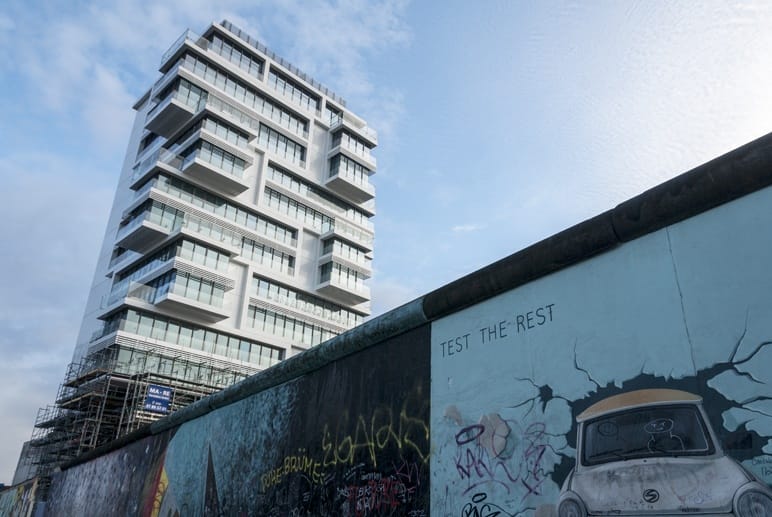
This was my second visit to Berlin, 7.5 years after the first one. I have seen the city change, in a way that doesn’t normally happen, in Europe. London is always London. Paris is always Paris. Berlin in 2007 was wilder than Berlin in 2015 – which is still wild, crazy and alternative, but it’s starting to button its shirt up. I just hope the buttons will fall out of the shirt, into the Spree, and stay there. Or Berlin will become just another city.
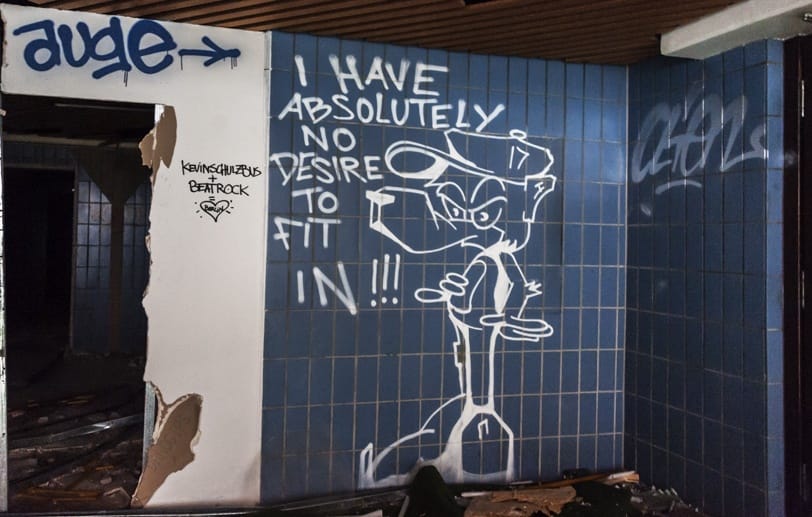
We were guests of Context Travel during this tour. All opinions are our own – we loved the tour and highly recommend it.

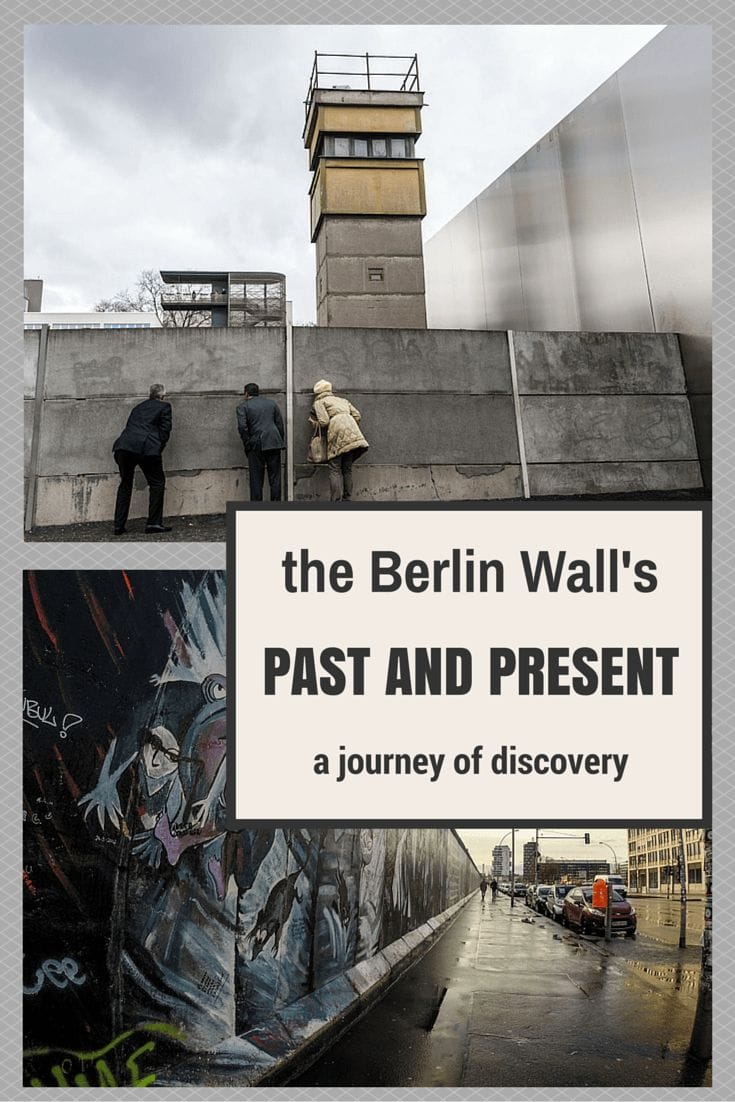
That sounds like a wonderful tour and is certainly something I would take when I head to Berlin.
I’m sure you’d love it!
You just gave me goosebumps. This was one of the best posts I have read about the Berlin wall and I wish we had sought out a guide when we were there a few years ago.
Thanks so much Angie. The place really came alive with a guide,,,
First off I want to say how well written this post was – you had me hooked until the end. I was a kid when the wall went down and while I remember it to a degree I don’t think the history of the wall is felt the same way in North America as it is overseas. I am intrigued to visit Berlin and I love the idea of having a tour from a guide who is steeped in the history not just someone who has memorized a story.
Thank you so much Jane. I’m glad you enjoyed the post, and I do hope you take the tour one day. You won’t regret it. Otherwise, check out Context Travel’s site. They run amazing walking tours in many cities in Europe and beyond!
We just got back from Berlin and I learned a lot from your post! It is a fascinating city.
Thanks so much for your comment!
For me the Berlin wall is a very sad reminder of the Communist Era. I’ve seen it last year too and I was very impressed by it. I was amused by the paintings that some young artists painted on pieces of this wall.
So good to get to finally meet you and Nick at TBEX, Margherita.
Same here Anda. Great meeting you!
This is such an informative post, I learnt so much. I never knew that about the U-bahn – so uch to learn! I’llc certainly look up this tour if I get to Berlin soon, thanks.
Thank you Phoebe!
This is an amazing post- with a lot of objective history as well as your own emotions as you experienced this tour and shared your impressions of the changes in Berlin.
Thanks so much Victoria. The tour is amazing!
Great post! I also remember when the wall came down on TV. I was pretty young and my parents were really emotional while watching it. I didn’t understand what was going on or why there was a wall in the first place, but it really affected me to see my parents so affected at that age! I wished that we knew more about it when we visited Berlin, this tour sounds great, next time we visit Berlin we will definitely look into something like that.
We must be the same age Katie. Sounds exactly like my experience!
I have been to Berlin three times. The first was a side trip asan exchange student in West Germany, and the wall existed. The East Berlin I saw then is so different from what I saw on my last visit which was two years ago. (My second visit I stayed in the West.) I wish I had read this first before our last visit as the tour sounds so interesting. I know who spends Southern Hemisphere summer her in New Zealand – she successfully escaped a long time ago. Her story is so passionate and emotional. Thanks for sharing your photos.
Thank you Rhonda. I’d love to read a post about your three experiences in Berlin, and about the woman who escaped. Pleeeaase tell me you’ll write it?
What a fantastic tour. It really sounds like you got a lot of good information from it. I find the Ghost Stations especially interesting. It’s been a long time since I’ve visited Berlin, and I wonder how much I would recognize. I invite you to take a look at my blog post with photos from my husband’s childhood trip to Berlin in 1976 when the Wall was still standing.
http://malaysianmeanders.blogspot.com/2014/11/flashback-to-before-fall-of-berlin-wall.html
Oh my goodness. One of the best posts I’ve seen in a while. Thanks for sharing it. So moving to see the contrast between the two sides, and how much it has changed now!
For anyone interested in history this would be a very moving experience.
So true. Thanks for the comment!
My husband went to Berlin in college and talks about taking the U-Bahn through East Berlin but not stopping as it went from one part of West Berlin to another. What a strange chapter in history, on both sides of the wall.
That’s crazy and really made an impression of me. What a crazy tale.
Quite an informative post. You’ve made me want to learn more about the wall and its effects. Hopefully one day I will be able to take the same tour.
Hope so too Rachel! Thanks so much for your comment!
So true Madaline. I remember that day too…
This was a really fascinating read, thank-you.